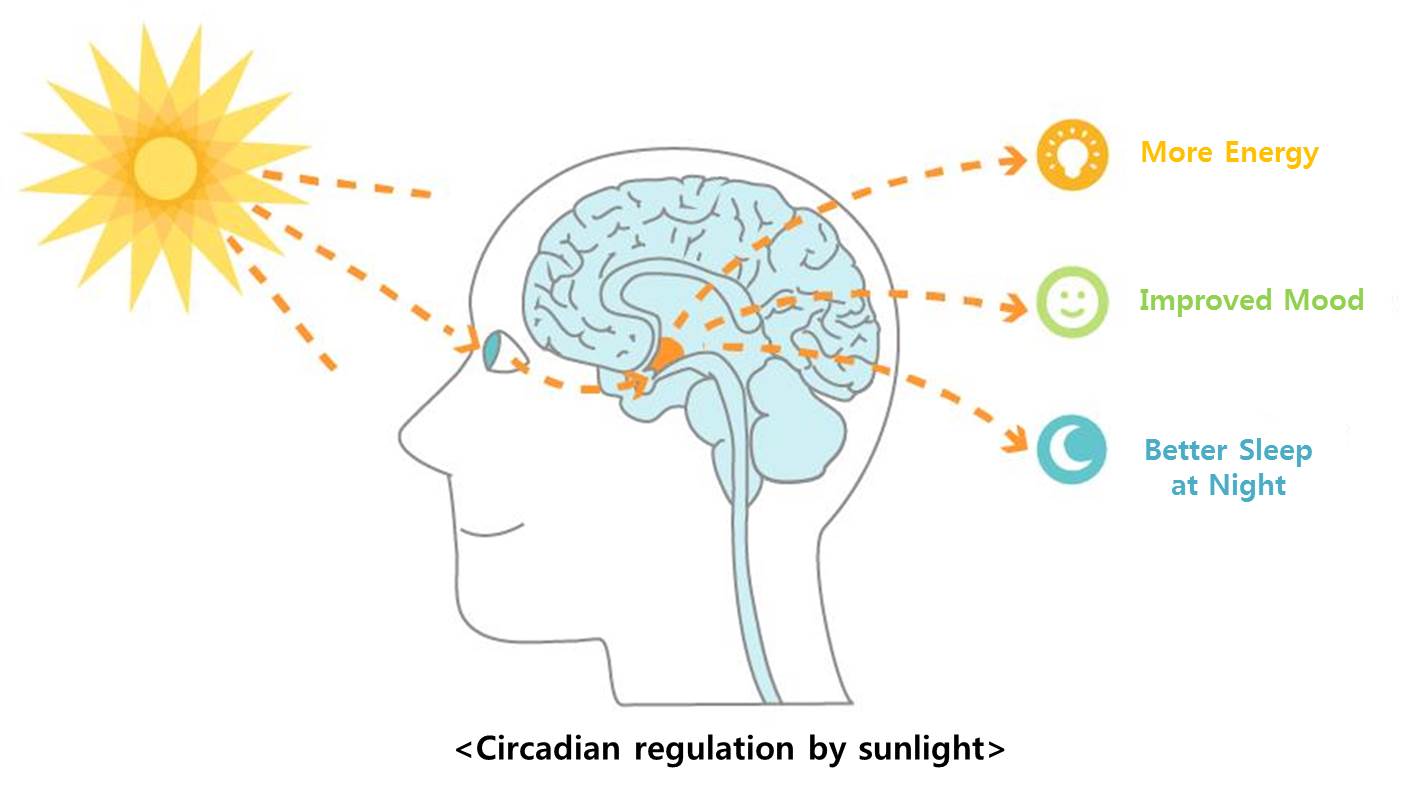|
Summary I: Working principle of light and photon and function of spectrum
As we introduced in our previous newsletters, light is composed of photons, energy particles, which have a profound impact on not only all living organisms but also objects. As an example, when a material is exposed to light for a long time, it may discolor or break down. This is because when a photon strikes an object composed of atoms, electrons escape from the object.
A light bulb we use at home everyday emits about one quintillion (1 x 1018) photons per second and hundreds of billions of photons included in the light are coming into our eyes. The light energy delivered to the eye plays a key role in maintaining normal biological activities including visual perception, circadian regulation, and eye growth.
Living organisms on earth including human have adapted to the natural sunlight for millions of years, so natural light is the most optimal light for the human body. However, in modern society, as the use of artificial lighting is becoming common, various health-related issues such as increased myopia prevalence and circadian rhythm disruption are emerging as social problems. These are mainly originated from the spectral differences between natural light and artificial lights. It is time to realize that good lighting resembling nature is now a necessity to maintain a healthy life.
A-Young Lee Ph.D
Biologist Head of Our Healthcare Committee * Next week’s Topic: Light Science Summary II
You can find "Interesting Story about Light Science” series on the link below. http://www.seoulsemicon.com/en/technology/Sunlike/?content=lightScience
Seoul Semiconductor / ohc@seoulsemicon.com 97-11, Sandan-ro 163beon-gil, Danwon-gu, Ansan-si, Gyeonggi-do, Republic of Korea Unsubscribe
|

